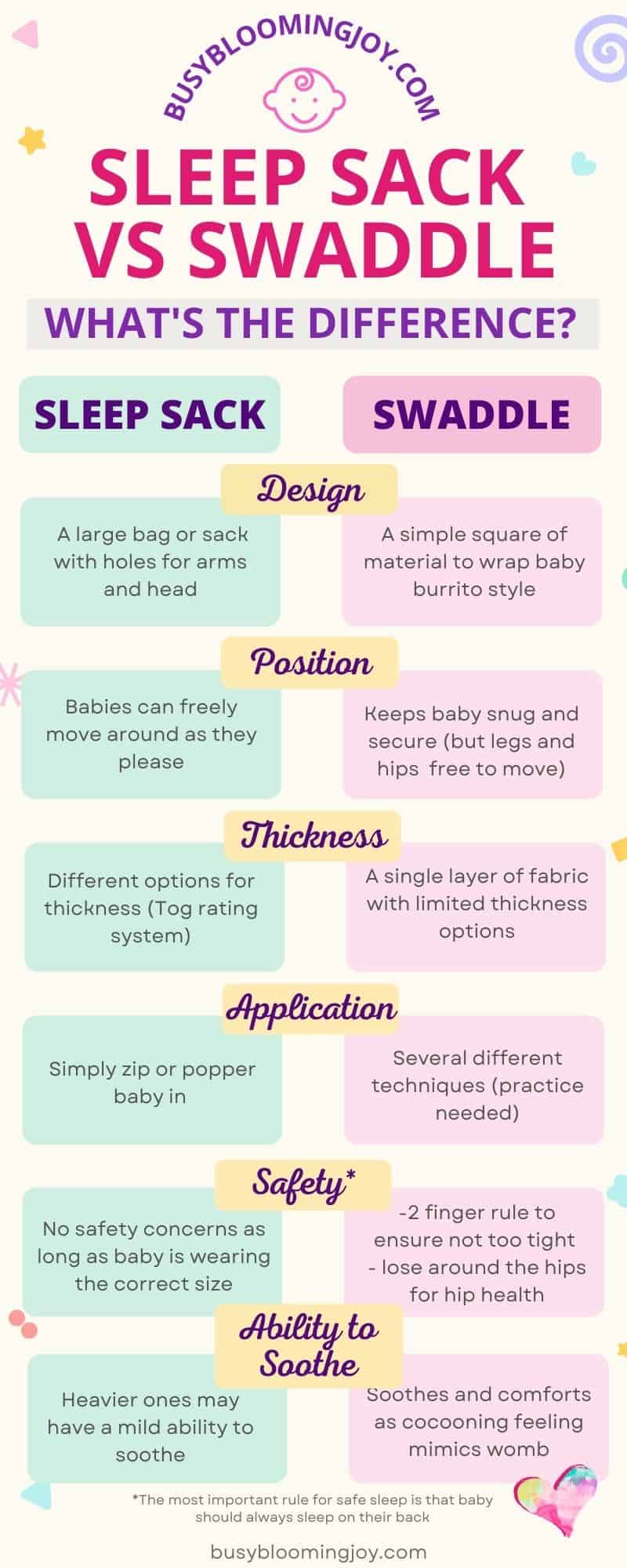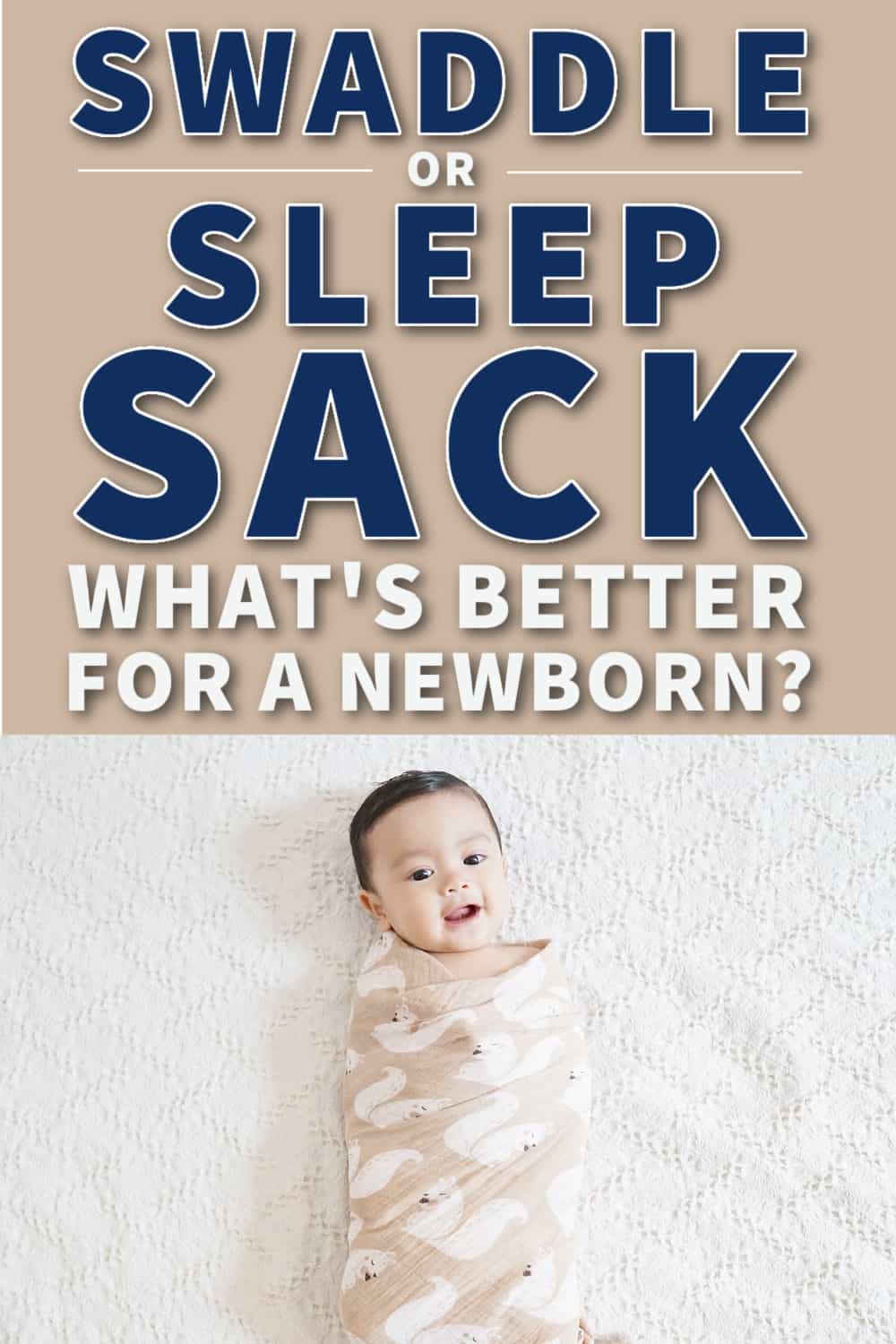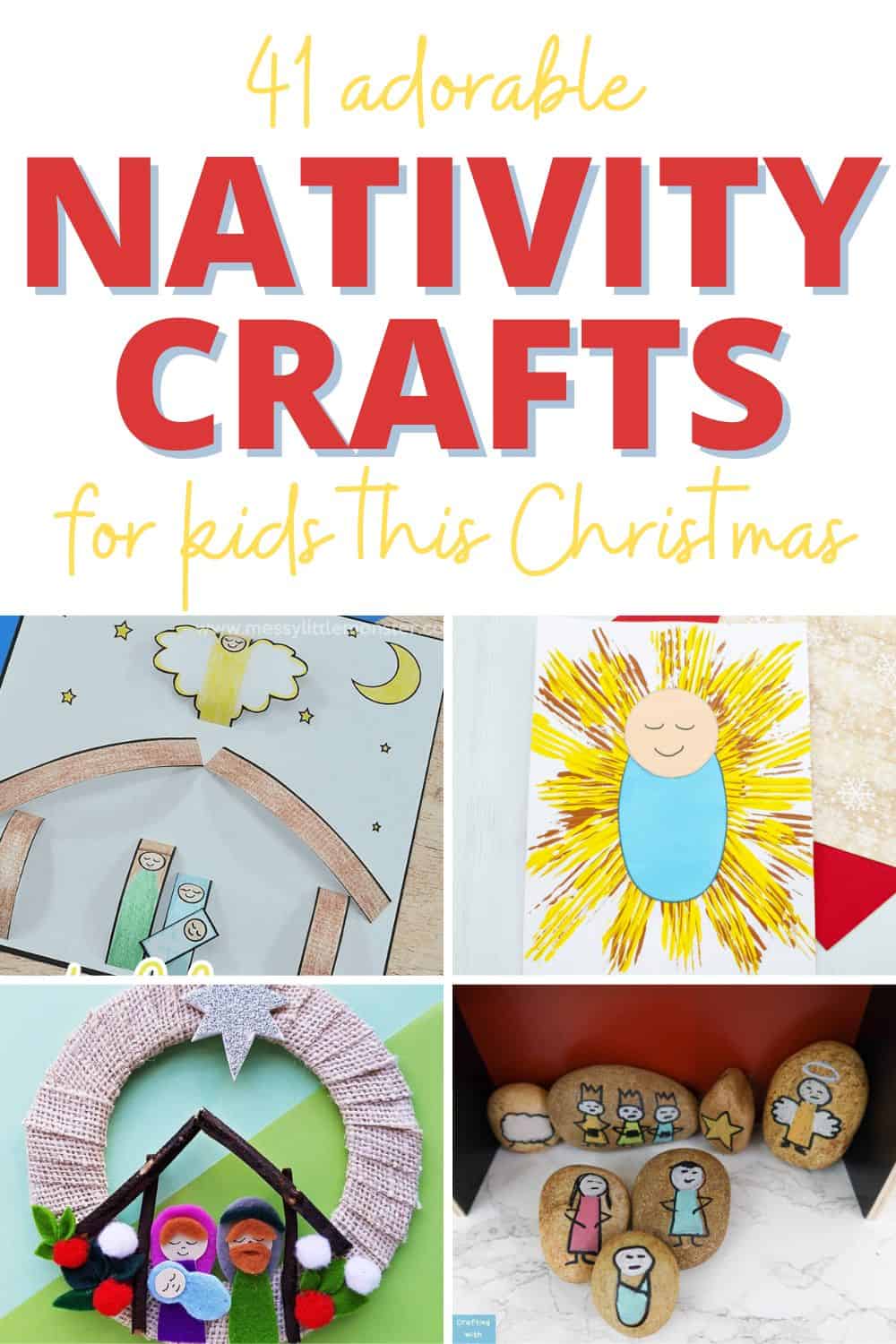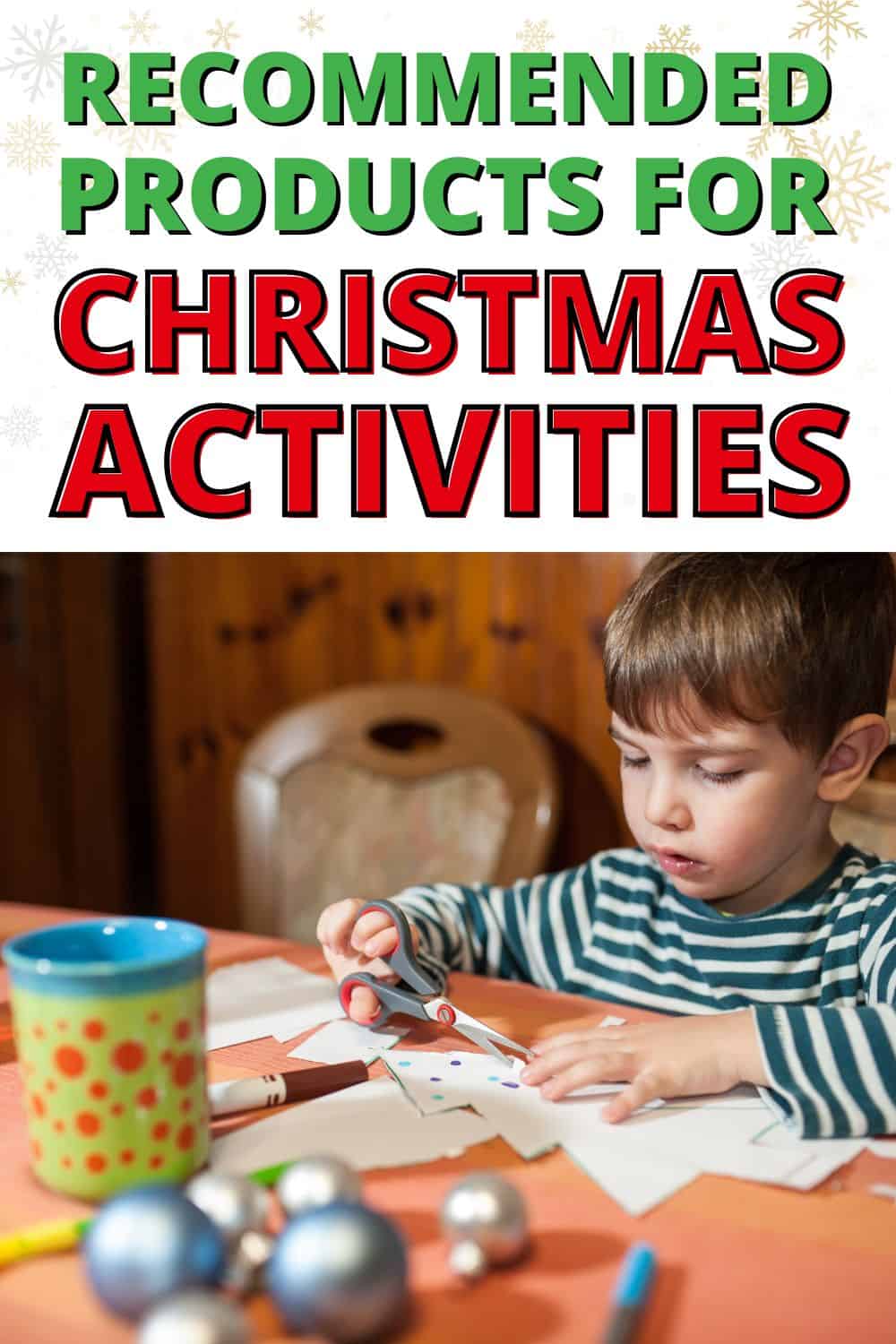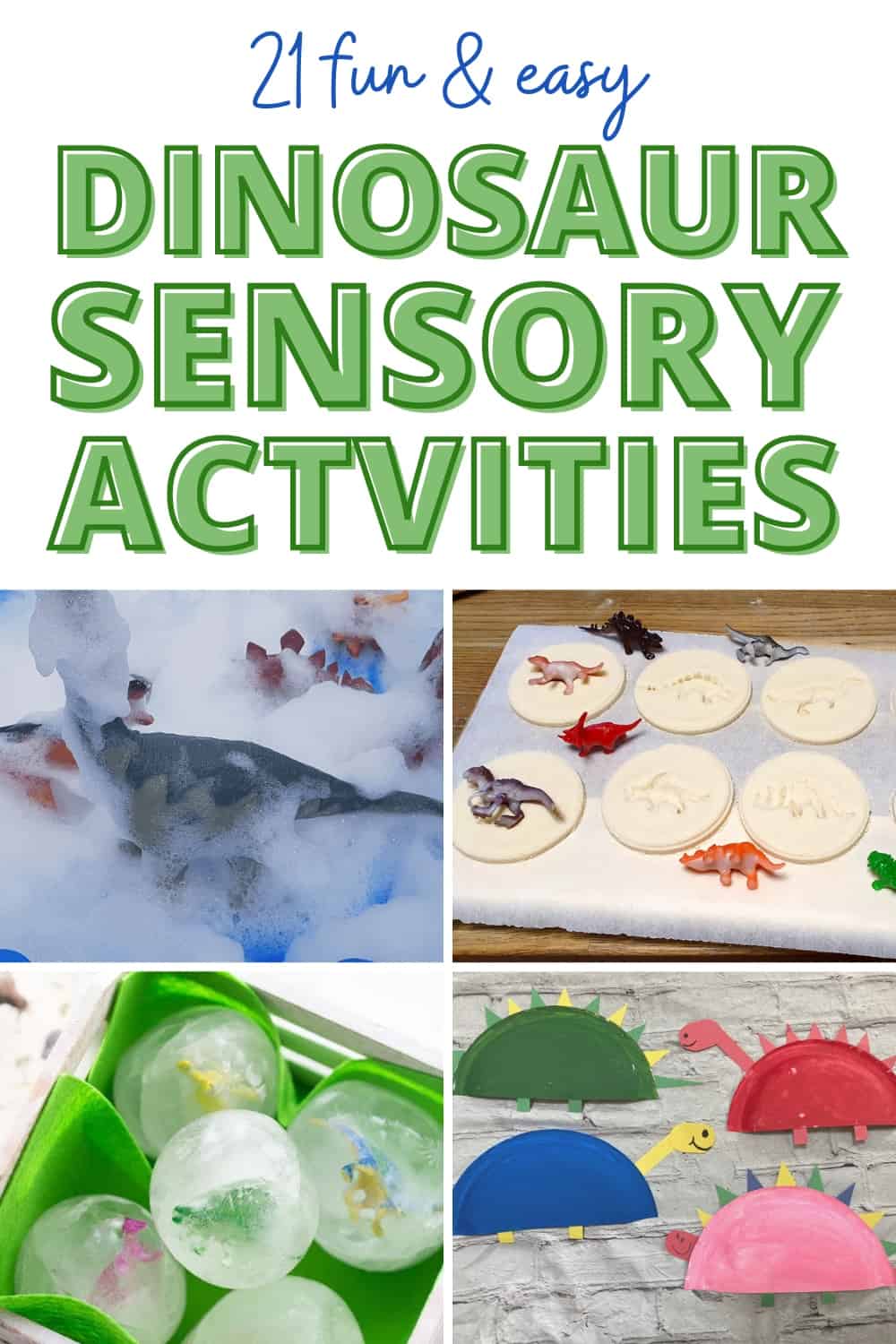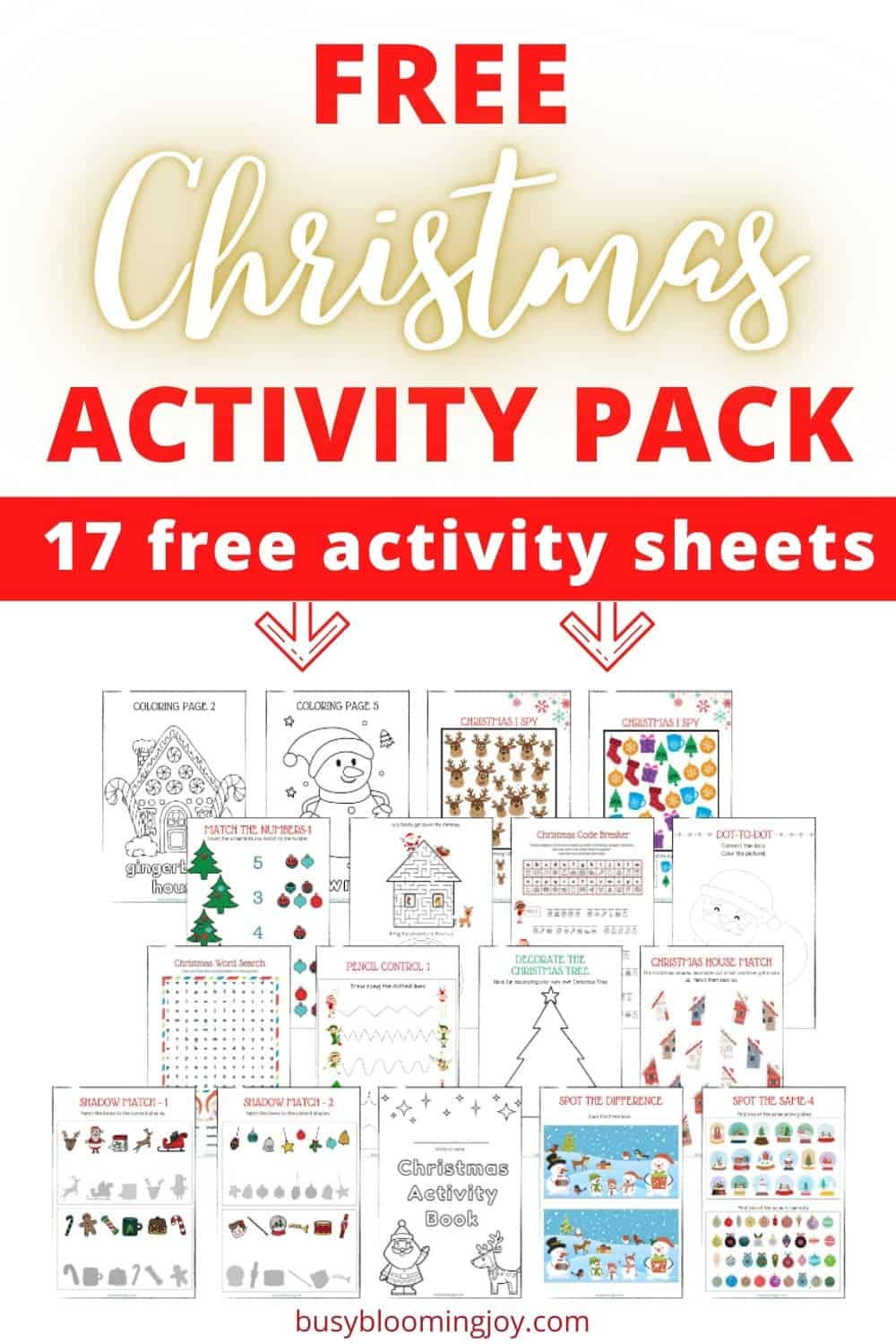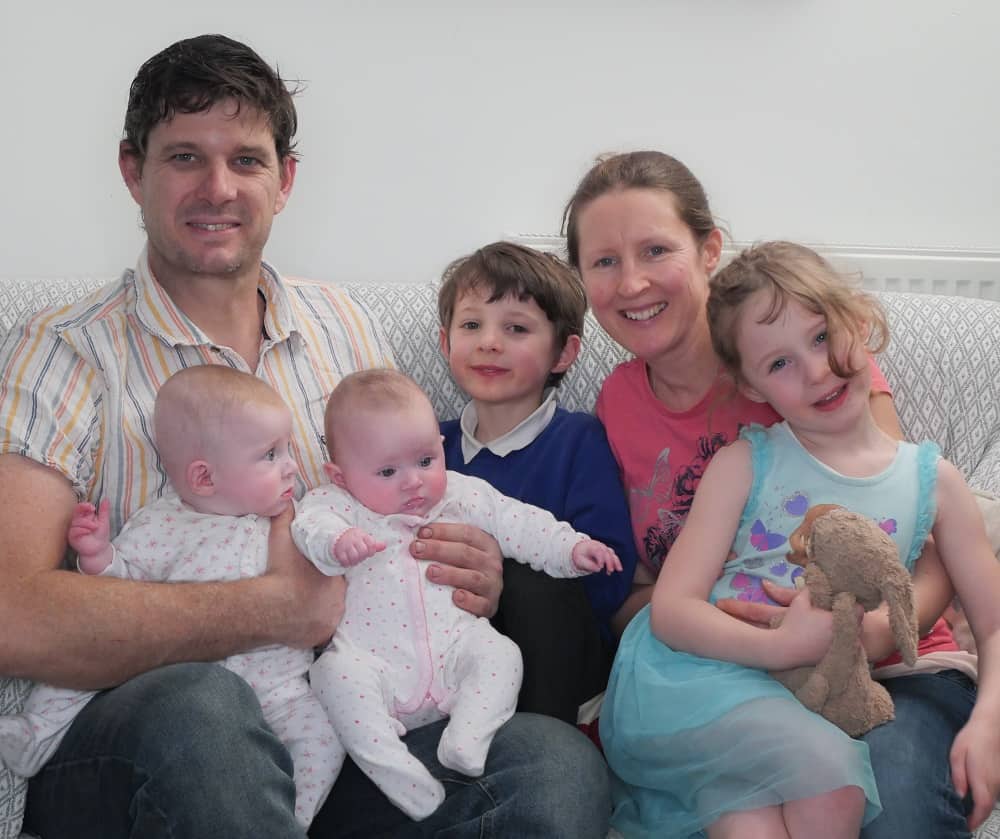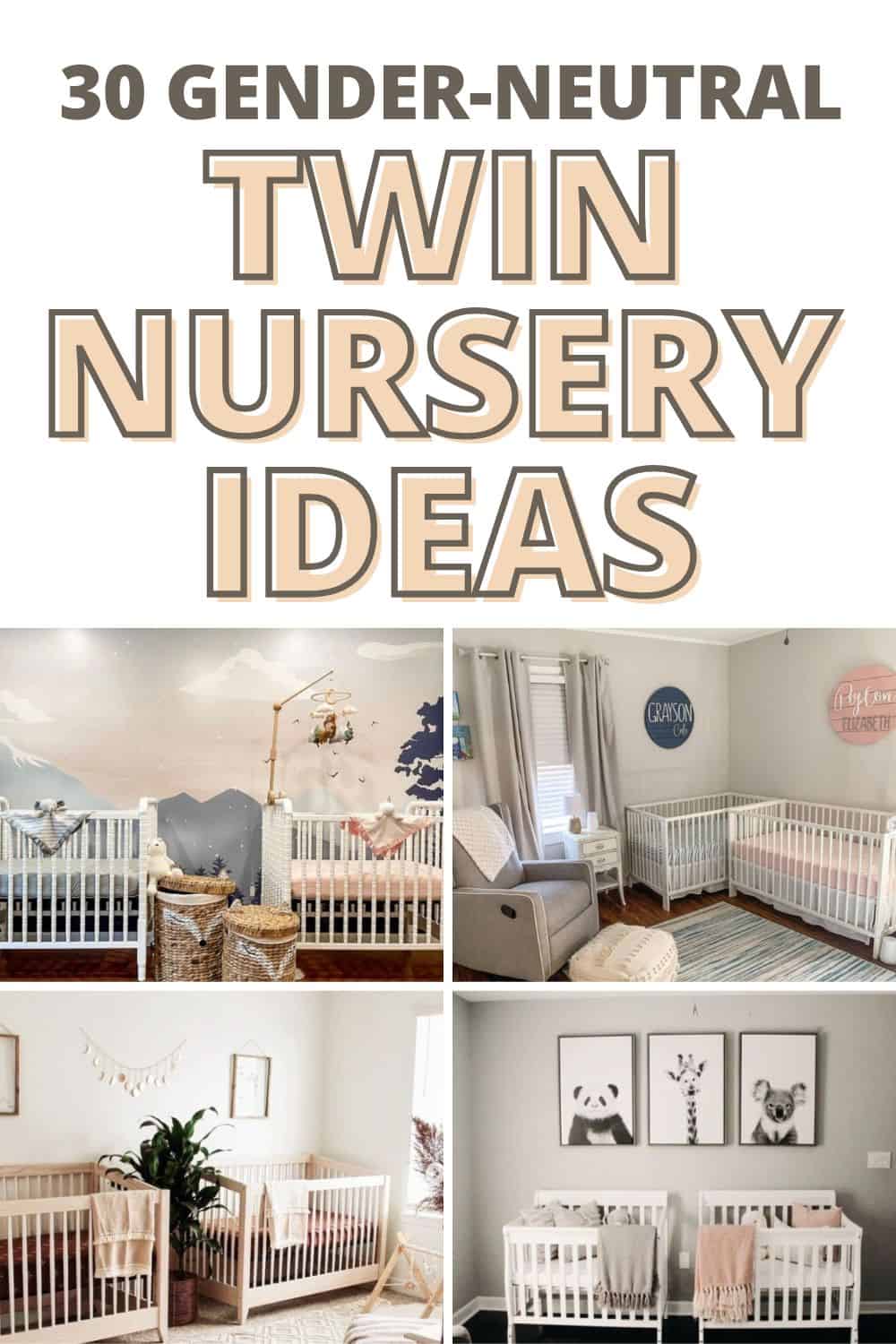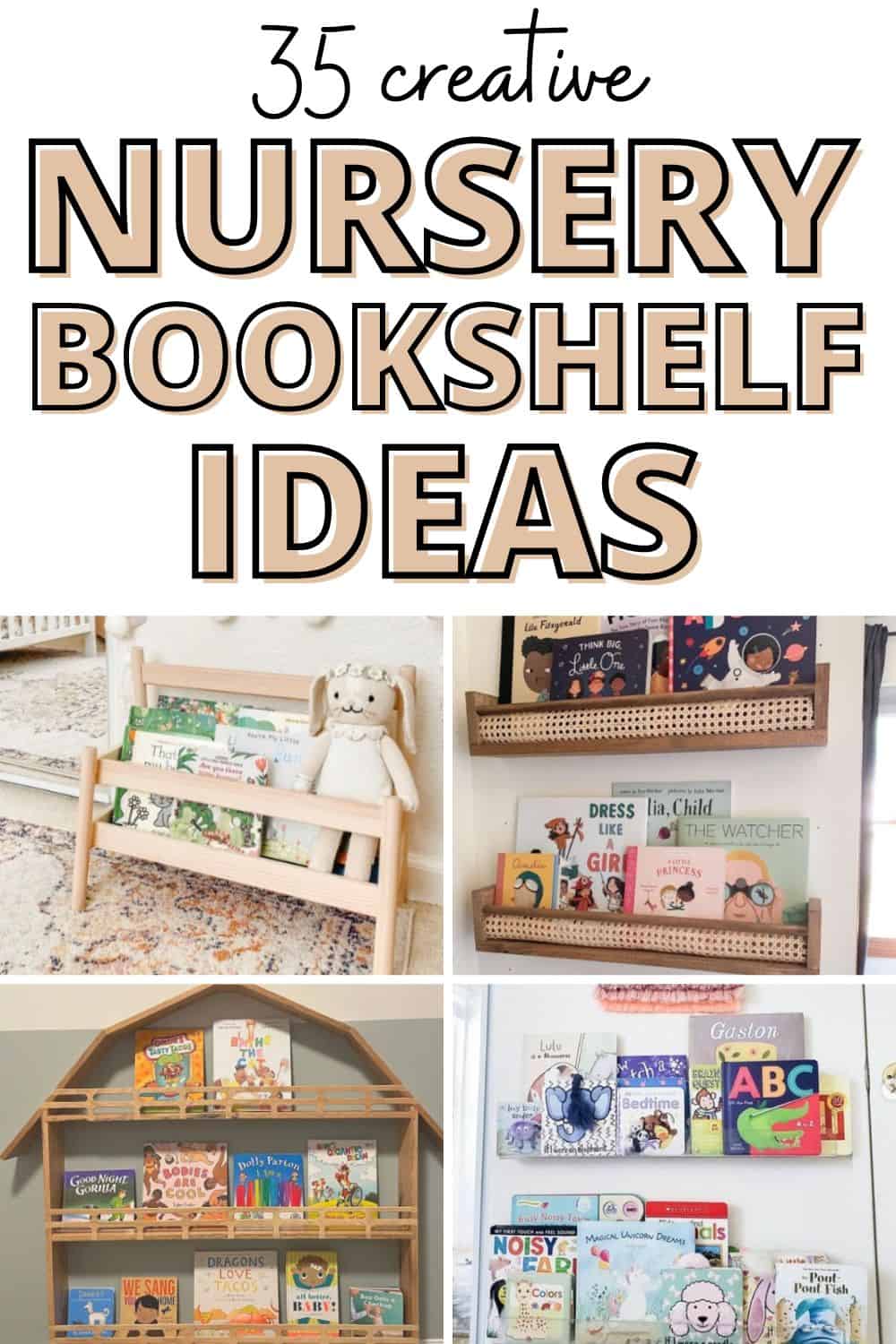Sleep sack vs. swaddle: what’s the difference and what’s better for a newborn? This post reveals all…
There are so many decisions when you have a newborn and so many things to get your head around, especially when it comes to newborn sleep. Sleep becomes your number 1 priority, because if your newborn isn’t sleeping, you won’t be sleeping. And without sleep, life kinda sucks.
So you want your baby to sleep well, which means being comfortable as well as safe. A newborn’s sleepwear can play a big part in both – but what’s the best option? Swaddle or sleep sack for a newborn?
Oh, and then there are swaddle sleep sacks?
Confused? I was.
Maybe you’re not even sure what exactly these things are. And walking into the baby section of any store will give you endless newborn sleepwear options; it can all be a bit overwhelming.
Don’t worry, you’re in the right place. We will break down the differences and the benefits of swaddles and sleep sacks so you can finally get on with helping your newborn with a good night’s sleep.
Sleep sack vs. swaddle: this post will compare the two. And you’ll learn if a swaddle or sleep sack is better for your newborn.
Table of Contents
ToggleWhat is a swaddle and what is swaddling?
If you are a new parent, the term swaddling might sound a bit foreign. Or you may have heard about it but not have much idea what it is.

The technique of swaddling has been around pretty much since day dot but, thank goodness, the reasons for swaddling, as well as the techniques used, have evolved.
In Roman times babies were swaddled, by binding them in long strips of muslin, often to a “cradle-board” (plank of wood). The idea was to keep them warm and help the limbs grow straight.
They were swaddled day and night until they were at least 9 months…. Shocking, right?!
Not surprisingly, this wasn’t actually all that good for a baby! In the 18 century, a Dr Cadogan tried, but failed, to abolish swaddling.
However, swaddling is now strongly back in favor in the Western world, but the reasons to swaddle are comfort and sleep related.
Muslin is still a popular choice of fabric for swaddles for its softness against a newborn’s delicate skin. But that’s where the similarities end.
These days to swaddle is to wrap baby up like a mini burrito with a large square of fabric. This helps recreate the snug and familiar feeling of the womb to a newborn baby.
You can also now buy a swaddle with sewn pre-folds, velcro or zips to make swaddling that little bit easier.
Either way, as long as swaddling guidelines are followed, it’s safe for a newborn’s growing body and limbs and there’s no increased risk of Sudden Infant Death Syndrome or SIDS.

What are the benefits of swaddling a newborn?
Swaddling creates deep pressure touch, helping your newborn feel safe and reminds them of the womb. Imagine, your newborn has been tightly curled up inside the womb for 9 months – the freedom of all that space with flailing legs and arms must feel quite scary. Swaddling mimics the womb.
#1 Reason to swaddle: it calms and soothes and helps get baby ready to sleep.
For this reason, babies who struggle with colic will benefit from swaddling. Same goes for little ones that never want to be put down; swaddling mimics your touch and the close contact of your body.
#2 Reason to swaddle: it prevents unnecessary wakings at night, due to the “Moro” or startle Reflex
The Moro reflex turns a newborn into a startled starfish for no apparent reason. If you’ve seen the Moro reflex in action you’ll know exactly what I’m talking about!
It’s a newborn reflex that has little purpose these days. It’s a remnant of our tree-swinging days when it helped babies cling to mom.
It can be strong enough to wake and even upset a newborn. An effective and correctly fitted swaddle will keep the arms tucked securely to the side, preventing the Moro Reflex from disturbing. Baby will stay snug and asleep.
There’s scientific evidence that swaddling reduces the number of night wakings. (Source) Can’t say better than that, right?

Do I have to swaddle my newborn?
Absolutely not – it’s entirely up to you. Having said that, you’d be mad not to give one a go. A newborn can sleep without a swaddle but chances are they’ll sleep a lot better with one.
You may have a baby who is naturally cool, calm and collected, settles to sleep easily and has a very mild Moro reflex that rarely disturbs. In this case swaddling may not benefit your newborn as much.
Or you may feel that swaddling doesn’t suit your newborn, baby hates to be swaddled or you can’t get the silly thing to stay on and baby struggles and struggles and struggles until finally escaping.
These are all common swaddle problems which are covered in our free online swaddle course (complete with video tutorials and printables). Sign up now to learn the correct way to swaddle, so that baby does stay wrapped up, even if you have a swaddle hater or mini Houdini on your hands.
A “sleep sack”, “sleeping bag” or “wearable blanket” is alternative sleepwear to a swaddle
What is a sleep sack?
A sleep sack is often called a sleeping bag or wearable blanket. Hopefully, these alternative terms give you quite a clear idea of what it one is, otherwise the picture above will clarify.
How to use a sleep sack
There’s a hole for the arms and baby’s head with an opening at the front or side and zip or popper fasteners. Simply lay out the sleep sack and undo the poppers or unzip the opening. Then lay baby inside the sleep sack and zip up or fasten the poppers.
There is no swaddling aspect to a sleepsack; it’s simply a way of adding an extra layer to baby without using a blanket since loose blankets in the cot aren’t safe for a baby.
What are the benefits of a sleep sack?
The key benefit of a sleep sack is the safety aspect vs. a blanket. A sleep sack is a much safer alternative to loose blankets which are not advised for newborns and babies up to a year old. Loose bedding and blankets pose a risk of suffocation.
The same goes for any other loose items. Pillows, teddies, and comforters should not be present in baby’s crib or bassinet. Crib bumpers are also a no go. Check out the full list of Safe Sleep guidelines here.
A sleep sack is a safe way to keep baby warm at night. They also come in different thicknesses: they’re tog-rated like a duvet. Simply use a thicker one for colder nights.
Versus a swaddle blanket, sleep sacks are very easy to put on a baby. You can also change baby’s diaper quickly and with minimal disturbance with a sleep sack. The same is not true if swaddling.
Sleep sack vs swaddle: what’s the difference?
There are a number of differences between a swaddle blanket and a sleep sack.
Sleep sack vs swaddle: DESIGN
Swaddle blanket: a simple square of material that you use to wrap baby up into a neat swaddle (burrito style)
Sleep sack: a large bag or sack that encloses baby’s body, with holes for arms and head
Swaddle vs sleep sack: POSITION OF BABY ONCE DRESSED
Swaddle blanket: an effective swaddle keeps baby snug around the torso, with arms held secure against the side of the body. Hips and legs remain free to move (this is important for hip health)
Sleep sack: baby is free to move however they please
Sleep sack vs swaddle: THICKNESS
Swaddle blanket: a single layer of fabric, minimal variation in thickness from one swaddle to the next
Sleep sack: different options for thickness, from a thin sheet (0.5 tog) to a thick padded duvet (6 tog)
Swaddle vs sleep sack: APPLICATION
Swaddle blanket: lay blanket out, place baby on top and wrap using one of several different techniques (it can take practice)
Sleep sack: lay out and unzip or unpopper, place baby inside and zip up/popper together (no practice needed)
Sleep sack vs swaddle: SAFETY
Swaddle blanket: follow guidelines to ensure the swaddle is safe for baby’s hips and there’s no increased risk of SIDS
Sleep sack: as long as baby is wearing the correct size, there are no safety concerns (a sleep sack too big could potentially ride up and over a baby’s face)
Sleep sack vs swaddle: ABILITY TO SOOTHE
Swaddle blanket: soothes and comforts due to cocooning feeling
Sleep sack: thicker, heavier sleep sacks may have a mild ability to soothe (the jury’s out on whether or not weighted sleep sacks are safe)

Sleep sack vs swaddle: 3 key benefits
There are 3 benefits to a sleep sack vs a swaddle blanket:
#1 Sleep sacks come in different thicknesses
It’s easier to keep baby warmer if necessary (with swaddling you’d need to double swaddle)
#2 Sleep sacks are much easier to put on
If you’re using a simple swaddle blanket, swaddling effectively and correctly does take a bit of learning and skill.
#3 Sleep sacks offer easy access to the diaper area
This makes nighttime changes quicker; the same is only true of some of the pre-folded swaddle sacks
Swaddle vs. sleep sack for newborn: 2 major benefits
There are 2 advantages of a swaddle blanket vs sleep sack for a newborn:
#1 A swaddle calms and soothes
With arms held close to the body, baby experiences the tight hold she would have experienced in the womb. This calms, comforts and prevents the Moro Reflex from disturbing.
A sleep sack offers little of that deep pressure touch. It’s a baby version of a sleeping bag; arms are out to the side via arm holes, free to move around and disturb when the Moro Reflex strikes.
#2 A swaddle prevents Moro Reflex from disturbing
A sleep sack might be enough to dampen the Moro reflex for newborns with just a mild reflex, but for most newborns it won’t be nearly as effective as a well-fitted swaddle
With the deep pressure touch that swaddling creates, a swaddle is always going to trump a sleep sack for the newborn phase.
Can you use a sleep sack for a newborn instead of swaddling?
You can. A sleep sack is a safe alternative to swaddling; newborns can sleep in sleep sacks.
So if your baby doesn’t appear to benefit from swaddling due to a mild Moro reflex, you’ve really given up on getting it to stay on or you’re absolutely convinced baby hates the swaddle (surely not after this free swaddle course?!) then a sleep sack is the way to go.
Baby can no longer be swaddled once becoming more mobile and able to turn from a back-lying position onto the front. At this point you need to transition to a sleep sack.
The arms need to be free once baby is moving so she can’t be stuck on her front, risking SIDS. More details covered later on in this article.
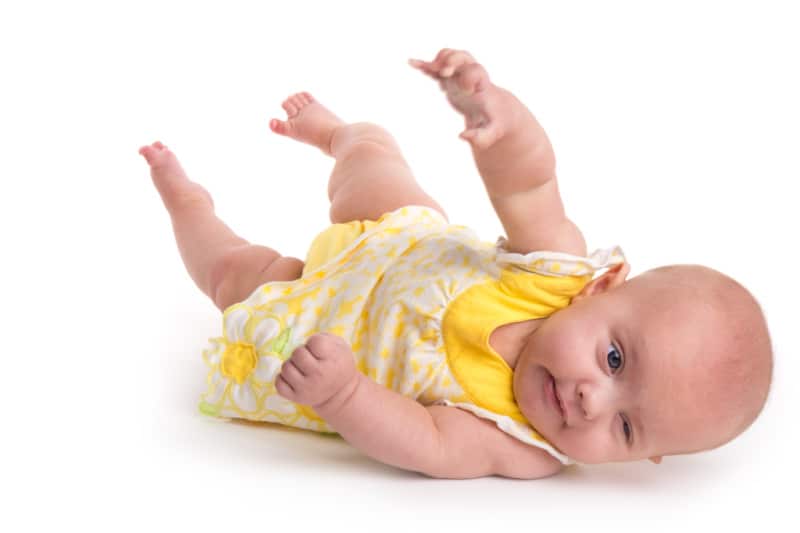
When to use sleep sack vs swaddle
If your newborn is rolling or attempting to roll from their back to their tummy, it’s no longer safe to use a swaddle. You must then use a sleep sack for your newborn or older baby.
When babies can roll over and are swaddled, they could easily get stuck. Their arms will be strapped in by the swaddle so they’ll be unable to lift their face off the mattress. This poses a significant risk of accidental suffocation.
So when your baby starts rolling, you need to stop swaddling immediately. This usually happens around four months old for most babies but can happen as early as 8 weeks.
Normally by this point, the Moro reflex will have faded significantly, developing into the more adult startle reflex.
What about a ‘swaddle sleepsack’ or ‘swaddle bag’?
Do you like the idea of swaddling for those sleep-related benefits? How can you not!
However, the thought of getting those origami folds right is too much, or you’ve tried swaddling and failed? Then you need to try a swaddle sleepsack. Sometimes also termed a swaddle sack or swaddle bag.
A hybrid swaddle sleep sack combines the swaddling effect of a swaddle blanket with the ease of use of a standard sleep sack
A swaddle sleepsack hybrid is far more structured than a sleep sack, with pre-folds, zips or velcro to offer swaddling properties without the need to learn any complicated folding techniques.
Benefits of the hybrid swaddle sleepsack
A swaddle sleepsack is effectively a cross between a swaddle blanket and a sleep sack, giving you the best of both worlds:
#1 Calms & soothes
A swaddle sleep sack or swaddle bag has a tight, close hold that mimics the womb. It’ll also help prevent disturbance from the Moro Reflex, just like a well-fitted swaddle will.
#2 Ease of use
It’s much easier to use than a swaddle blanket, with zips, velcro and/or pre-folds. So is easy to dress baby in, like a sleep sack
With a hybrid swaddle sleepsack, you get the ease of use of a sleep sack combined with the snugness and sleep benefits of a swaddle.
In addition, while swaddle blankets need fully removing for diaper changes, many swaddle sleepsacks are designed to allow easy access to the diaper area without having to unwrap baby’s arms.
Any drawbacks of the hybrid swaddle sleepsack vs swaddle blankets?
There are three main issues:
#1 The varying effectiveness of different swaddle sleepsacks for different babies
With a swaddle blanket you can try multiple different swaddle techniques to see which one works best for your newborn. However, there’s only one way to use a specific swaddle sleepsack.
If it doesn’t fit your baby well or isn’t effective in soothing, calming or fails to control the Moro Reflex, you’re back to the drawing board
#2 They’re often sized, so you may need a 2 or 3 just to get baby through the newborn phase
Again, this is in contrast to a swaddling blanket which can last your baby all the way through the newborn phase and beyond or whenever swaddling is no longer safe (when baby starts to roll and turn)
#3 Price!
They can come with a hefty price tag and you won’t know which suits your baby the best until you’ve bought one and tried it.
Are swaddle blankets & swaddle sleep sacks safe for a newborn?
Swaddling reduces night wakings – this is one of the reasons why you want to swaddle. Babies stay longer in their deepest sleep stage, “quiet sleep” when swaddled. (Yes, believe it not a newborn has distinct sleep patterns & cycles!)
Newborns also show fewer spontaneous arousals when swaddled (source). The periods of sleep between wake-ups will be longer.
But these arousals are there for self-protection. They allow the brain to check-in that all is ok (which includes checking for a drop in oxygen levels) and come into full consciousness if necessary.
So there was natural cause for concern that swaddling may be a risk factor in SIDS. However, as long as safe sleep guidelines are followed, swaddling with a traditional swaddle blanket or swaddle sleep sack is considered safe for a newborn to sleep in.
Minimizing the risk of SIDS when baby is swaddled
The full list of recommendations to swaddle safely are:

1) Back to sleep
Baby must, must, must sleep on her back – even more important when baby is swaddled, as per the above.
2) Ditch the swaddle when baby starts to roll and turn over
Because baby must, must, must sleep on her back…
3) Ensure swaddle is tight and secure
You don’t want it to come loose and become a suffocation hazard:
You need to be able to fit two fingers comfortably between your baby’s chest and the swaddle blanket.
You can swaddle a baby too tightly. Use the two-finger check to ensure it’s not too tight.
4) Beware of overheating
Babies cannot regulate their body temperature easily, and of course, are unable to easily communicate when too hot or cold.
Key is to monitor how hot or cold your baby is and look for the signs of overheating:
- tummy and/or back of neck feel hot to touch (hands and feet will naturally feel cooler)
- sweatiness and clamminess
- damp hair (due to sweat)
- flushed cheeks
- rapid breathing
- heat rash
So when swaddling with either a swaddle blanket or swaddle sleep sack, keep an eye out.
If baby feels hot, remove a layer and check again 10 minutes later. You can also open windows/doors and turn on a fan (not directly over your newborn) to get some air circulating helping to cool baby.
Swaddle blankets, swaddle sleep sacks & hip health
The traditional swaddling techniques of binding baby with legs straight and fully extended was extremely damaging, often resulting in hip dislocation or dysplasia – no wonder having been culled up in the womb with legs all tucked up.

Safe swaddling guidelines to protect the hips
The swaddle blanket or sleep sack needs to be loose around the hips so the legs can stay in their natural position when baby is lying on her back, bent up and out. Think frog on its back. This means baby will be able to move her legs freely.
For more info. on hip issues and hip healthy swaddling check out this article from the International Hip Dysplasia Institute.
Are sleep sacks safe for newborns to sleep in?
Sleep sacks are designed for your newborn to sleep in and are safe as long as:
#1 baby wears the correct size
A sleep sack that’s too big could start to ride up with a wriggly baby, risking suffocation. A sleep sack that’s too small could restrict leg movement, which wouldn’t be safe from a hip development point of view.
#2 Baby has her arms free and through the armholes
Again, otherwise, the sleep sack could ride up and over baby’s face and risk suffocation.
Which is better for my “Fourth Trimester” baby: swaddle or sleep sack for a newborn?
Familiar with the term ‘fourth trimester’ or ‘4th trimester‘? Babies are born developmentally immature vs. every other species so the thought is baby would have done better staying in utero another 3 months.
But, you know, large head, small passage of entry into the world… any longer and birth would be almost impossible.
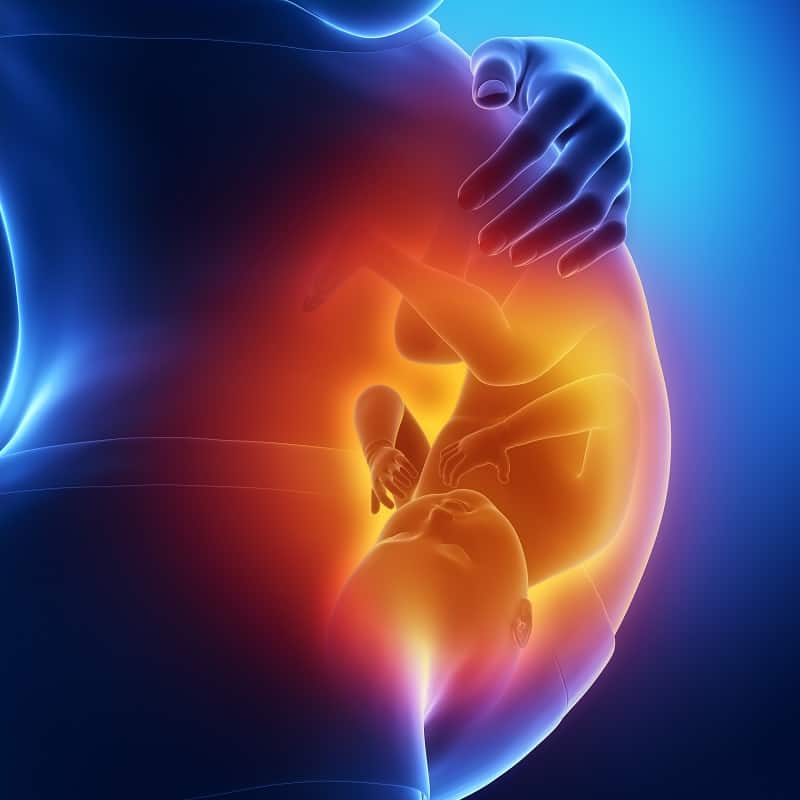
For this reason, mimicking the comforting sensations of the womb are particularly important during the fourth trimester or newborn phase. And this is where the swaddle comes into its own. It helps recreate a very important environmental aspect of the womb: that deep pressure touch.
Hence, swaddling has such benefits in the calming, soothing and sleep departments.
So swaddle or sleep sack for a newborn?
It should be no surprise that swaddling via a swaddle blanket or swaddle sleepsack, trump a sleep sack for a newborn any day.
But what about the different swaddling options?
Swaddle blanket or swaddle sleep sack?
This is nothing more than personal choice. You can learn the right way to swaddle effectively with a simple swaddle blanket or take the plunge and invest in a swaddle sleepsack.
Swaddle sleepsacks normally have the advantage of being able to do discreet diaper changes. There are designs that avoid having to completely unwrap baby. But, other than that they’re on a level playing field.
I, for one, am definitely for swaddle blankets – once you’ve found an easy technique, there will be no stopping you…. Find out my fail-safe swaddle technique by taking this free swaddle course:
What to consider when choosing a swaddle or sleep sack for newborn
Choosing the perfect swaddle or sleep sack for your newborn can seem daunting, but it doesn’t have to be. I have listed all the factors that you should pay attention to when choosing a swaddle, sleep sack or swaddle sleepsack for your baby.
#1 FABRIC TYPE for swaddles & sleep sacks
Best fabrics for swaddle blankets & swaddle sleep sacks
Like any fabric that’s close or in contact with your newborn’s delicate skin, you want to go for natural fibers such as cotton, bamboo or a blend of the two.
The correct term for fabrics made from bamboo is actually “Viscose rayon”, “rayon” or “rayon made from bamboo”.
Both are breathable fabrics, unlike synthetic materials, which will keep baby comfortable as well as minimize the risk of overheating.
Organic cotton is preferable over regularly grown cotton since it’s softer still and is eco-friendly.
For even more softness, try viscose rayon, which is better still at wicking away moisture than cotton. It may also have some natural anti-bacterial properties. However, the chemical processing of raw bamboo into fabric is thought to remove much of this.
(Due to the use of chemicals to produce bamboo fabric, bamboo fabrics can never be classified as “organic”.)

Weave type for swaddle blankets
There’s either traditionally used muslin, which has a large and loose weave, allowing plenty of air flow. Muslin swaddles are ideal for warmer weather as they’re effectively breathable blankets.
For cooler weather opt for jersey knit which has a much tighter weave. often with some added spandex for a bit of stretch.
Best fabrics for sleep sacks
Since a sleep sack is loose fitting and little of it is in close contact with your newborns’ skin, fabric choice is not as important. However, natural materials are still best as they’re breathable and therefore safer and more comfortable.
Again, cotton or viscose rayon/rayon/rayon made from bamboo are first choice.
Sleep sacks are also available in different tog ratings; the filling is often a synthetic material which is fine.
#2 TEMPERATURE CONTROL for newborn sleep sacks or swaddle
Overheating is a risk factor in SIDS. Besides, your newborn won’t sleep well if too hot or cold. So check baby is a comfortable temperature, as per the guidelines earlier.
The main way of ensuring baby is a comfortable temperature is to layer baby correctly under the swaddle or sleep sack.
For the recommended ambient room temperature of 16-20 degrees Celcius or 61-68 degrees Fahrenheit, your newborn will probably be a suitable temperature in the following:
Bodysuit/onesie + pyjamas/sleepsuit/one-piece + swaddle blanket, swaddle sleep sack or sleep sack
For appropriate clothing combinations for other temperatures, check out the “Layering baby up” section in the Newborn sleepwear post. The link will jump you straight to that section.
In addition, use a sleep sack with a suitable tog-rating.
To vary the thickness of a swaddle blanket you can switch between different muslins:
- Loose weave muslin is cooler
- Jersey knit muslin is a closer, warmer knit
You can also double swaddle baby if necessary.
For more detail check the Newborn sleepwear post.
#3 Newborn COMFORT for swaddling or sleep sacks
Anything next to baby’s delicate skin needs to be free from irritation. If you go for cotton or viscose rayon/rayon/rayon made from bamboo the fabric itself should be super soft and comfortable.
But look out for any seams, fabric folds in awkward places as well as velcro, zippers or any other fastening that could irritate. Obviously, this only applies to swaddle sleep sacks and sleep sack. This won’t be an issue with swaddle blankets.
Have a good check inside these for any potential discomforts and keep an eye on all your baby’s sleepwear and daywear for seams/stitching coming loose.
#4 SIZING of swaddle blankets and sleep sacks for newborns, for safety & effectiveness
Swaddle blanket sizing

Go for a swaddle blanket at least 44 x 44 inch (111 cm x 111 cm) – 47 x 47 inches (120 cm x 120 cm) is the standard size.
Smaller blankets are no more than “receiving” blankets or burp cloths. These are around 30 x 30 inches.
These smaller blankets will be big enough for a teeny tiny newborn but will quickly be outgrown. Then they will fail to keep those arms strapped in and snug. You’ll have an escape artist on your hands in minutes.
Sizing of swaddle sleep sacks or sleep sacks for newborns
Due to the fitted nature of a swaddle sleep sack, these are normally sized according to weight and/or length of your newborn. This is a downside of swaddle sleep sacks vs. swaddle blankets, as mentioned earlier.
Swaddle sleep sacks may only last a few weeks or so before you need to purchase the next size up.
Sleep sacks aren’t fitted so you’ll probably find one that’ll last the whole of the newborn phase.
For both types of sleep sack it’s important to choose the correct size for your baby, both for effectiveness and safety. As mentioned earlier, a sleep sack too small will be too tight and restrictive. It won’t allow for free movement of the legs and healthy hip development.
If a sleep sack or swaddle sleepsack is too big, there’s a risk or suffocation if it rides up over baby’s head.

#5 Sleep sack or swaddling: EASE OF ACCESS for nighttime diaper changes
All standard sleep sacks and most hybrid swaddle sleep sacks allow easy access to the diaper area. This means you can quickly and discreetly change diapers at night time.
Something to look for when choosing a sleep sack or swaddle sleep sack for a newborn is a double zipper. This means you can unzip the bottom without completely exposing your baby. You might even be able to get away with not waking them up for a quick diaper check.
#6 Ability to EASILY TRANSITION out of the swaddle or swaddle sleep sack, into a regular sleep sack
Ideally, if you’ve been swaddling your newborn, you want to transition out of it gradually when the time comes. (When baby starts to roll or turn full swaddling is no longer safe, as mentioned earlier.)
You want to be able to swaddle with one arm out for a few days and then with both arms out. This is possible with a swaddle blanket and most swaddle sleep sacks. If you go for a swaddle sleep sack over a swaddle or sleep sack, check this to be sure.
My picks for the best swaddle blankets, sleep sacks and swaddle sleep sacks for newborns:
#1 Best swaddle blankets for a newborn
Muslin swaddle blankets for newborns
All the following are at least 44 x 44 inch (111 cm x 111 cm), the recommended size for swaddling.
100% organic cotton muslin go for these ones from Burt’s Bees:
Burt’s Bees muslin 100% organic cotton swaddles
Or these ones from Aden Anais if you want to splash out on 100% viscose rayon.
Aden + Anais Silky Soft Swaddle Blanket,100% Bamboo Viscose
Or for a combination of cotton and viscose rayon, these muslin swaddles from Upsimples offer good value.
Upsimples Soft Silky Bamboo Muslin Swaddle
Jersey knit newborn swaddles
The cheaper of the jersey knit options is this predominantly cotton one from Aden & Anais (95% cotton, 5% spandex)
Aden + Anais Comfort Knit Swaddle Blanket Super Soft Cotton with Spandex
If you want to go with 100% viscose rayon, you’ll pay a premium. This one from Posh Peanut is stunning though isn’t it?
Posh Peanut Baby Swaddle Blanket
Or for a budget viscose rayon option (it’s a blend of polyester and viscose rayon), why not try this newborn swaddle from Copper Pearl.
Copper Pearl Large Premium Knit Baby Swaddle
#2 Best sleep sacks for newborns
You can get baby sleeping bags with arms or ones without. If baby is wearing pajamas/sleepsuit/one-piece, the arms are covered. So buying a sleeping bag with arms shouldn’t be necessary unless it’s extremely cold at night.
If you live in a warm climate, a sleeping bag/sack without arms should be sufficient.
Baby sleeping bag with arms
A good option is this lightweight baby sleeping bag with arms from Hudson.
Baby sleeveless sleeping bag
And one without arms, if you think your newborn will be plenty warm enough, is this baby sleeping bag/sack/wearable blanket from Halo.
#3 Best hybrid swaddle sleep sacks (swaddle sacks or swaddle bags)
There are a huge variety of designs when it comes to hybrid swaddle sleep sacks for newborns. The ones below are all quite different and you’re just not going to know what will suit your baby until you give one of them a go. It’s a bit pot luck.
Remember those key considerations when it comes to specifically choosing a swaddle sleep sack:
- sizing: will it grow with baby? Check the sizes available
- practicality/access for diaper changes: do you need to fully unwrap it for access to the diaper area?
- type of fastenings: velcro is easy but noisy so not ideal if you want to settle baby back to sleep quickly
- can you use it for swaddling baby with arms out: this makes transitioning out of the swaddle much easier
Miracle Blanket Swaddle Wrap
Budget-friendly, extremely effective and no noisy velcro, this newborn swaddle sleep sack is well worth a go.
A drawback is the inability to change diapers without fully unwrapping.
Swaddle sleep sack for newborn’s from Halo
This swaddle sleep sack is a simple zippable sleeping bag with flaps or “wings” to secure the arms. It unzips from the bottom so you can easily change diapers without fully unswaddling. It can be worn with the arms in a number of different positions, making for an easy transition out of the swaddle.
A downside is it’s fastened with velcro which could easily disturb a sleeping or easily startled newborn.
Swaddle sleep sack for newborns: the Woombie Convertible
This swaddle sleep sack from Woombie couldn’t be any easier to put on: just pop baby in and zip. The two-way zip makes diaper changes a doddle and the armholes allow swaddling with the arms out, effectively converting it to a sleeping bag/sack.
Love to Dream swaddle sleep sack
This swaddle sleep sack from Love to Dream holds baby’s arms up, which some babies prefer. A big downside is it doesn’t grow with baby well – you’ll need at least 2 different sizes for the first 3 months.
Transitioning from swaddle to sleep sack
If you decide on a swaddle blanket or hybrid swaddle sleep sack for your newborn, at some point you will need to transition to a sleep sack. This point comes when your newborn starts to roll over from their back to their tummy. It’s then no longer safe to swaddle, as mentioned earlier.
How to transition from swaddle blanket to sleep sack
It’s likely that your baby will still enjoy and be very used to the close confines of the swaddle, so it’s best to stop swaddling gradually. Start by swaddling with just 1 arm out for a day or 2, before removing the second. You can safely swaddle a newborn with arms out while transitioning out of the swaddle.
This way, your baby will still feel the tight hold of the swaddle, but with arms free will be able to roll back or at least lift her head, should she roll onto her front.
After a few days with both arms out, you can start baby in a sleep sack. Hopefully with no loss of sleep!
Can you go straight from swaddle to sleep sack?
Sleep sack vs swaddle: still wondering if a swaddle or sleep sack is better for a newborn?
Surely not!
Now that you have learned about the differences between sleep sacks, swaddles and hybrid swaddle sleep sacks and pros and cons of each, there should be no doubt in your mind that swaddling is the way to go.
Swaddle wins over sleep sack for a newborn!
The choice of swaddle blanket or swaddle sleep sack is more personal preference. Either are effective, both for a newborn’s comfort and the sleep-related benefits.
Get baby swaddled and sleeping, so you can rest.
FAQS on the sleep sack vs swaddle blanket conundrum
Should I swaddle my newborn all day?
Absolutely not. A newborn needs to get used to the newfound freedom of the outside world. This facilitates the development of muscle tone, balance and coordination.
For this reason, you also want to limit the use of car seats.
Get baby wrapped up and swaddled when due a sleep or to calm and soothe if gassy, irritable or overtired.
When to stop swaddling a newborn
You must transition from swaddle to sleep sack as soon as your newborn starts rolling or attempting to roll. This normally happens around 4 months, but can happen as early as 8 weeks.
This is because there’s a risk of suffocation should a newborn roll onto their front in a swaddle. They will be unable to use their arms or hands, which will be enclosed in the swaddle. This means they could get stuck face down and risk suffocation.
Can you swaddle a baby too tightly?
Yes, you can swaddle a baby too tightly. Use the two-finger rule to ensure the swaddle is tight but not too fight. You should be able to fit two fingers comfortably between baby’s chest and the swaddle.
Are sleep sacks safe for babies who can roll over?
Standard sleep sacks that act like wearable blankets, where baby’s arms are out and free to move, are safe for babies who can roll over. Should your baby roll over in a sleep sack, they will be able to push up on their hands and arms and adjust their head position. There will be no increased risk of suffocation.
In contrast, a swaddle is dangerous once baby starts to roll as they may become with their stuck face down into the mattress.
Is it OK to swaddle a newborn with arms out?
It’s perfectly safe and ok to swaddle a newborn with their arms out. It won’t be as effective as swaddling the arms too as the Moro reflex may still disturb your baby. However, once your baby has started attempting to roll over, it’s no longer safe to fully swaddle. Swaddling with the arms out is safe and therefore a good way to transition from swaddle to sleep sack.
Can baby overheat in sleep sack?
Yes, a baby can overheat in a sleep sack. Always dress baby according to the temperature. At 16-20 degrees Celcius or 61-68 degrees Fahrenheit, your newborn will probably be comfortable in a bodysuit/onesie and pyjamas/sleepsuit/one-piece under a 2.5 tog sleep sack.
At higher temperatures, they will need a thinner sleep sack or fewer layers underneath. If it’s cooler, use a thicker sleep sack.
To check your baby is a comfortable temperature, feel the tummy and/or back of the neck which should feel hot to touch. The hands and feet will naturally feel cooler.
Sweatiness, clamminess, flushed cheeks, rapid breathing and heat rash are signs that baby is overheating. Adjust their clothing accordingly.
Are sleep sacks better than blankets?
Sleep sacks are much better than blankets for newborns and babies under a year old. Loose blankets can move around, or baby can move around and under them which poses a risk of suffocation. Safe sleep practice includes not having any loose items in baby’s sleep space.
A sleep sack the correct size, however, cannot move over a baby’s face. There’s no safety risk associated with using a sleep sack.
Does a sleep sack make it harder for baby to roll?
Your baby will be able to roll in a sleep sack, although it may be a little harder. Sleep sacks are fairly effective at preventing baby from climbing out the crib though! This can be very useful when baby becomes more mobile.



